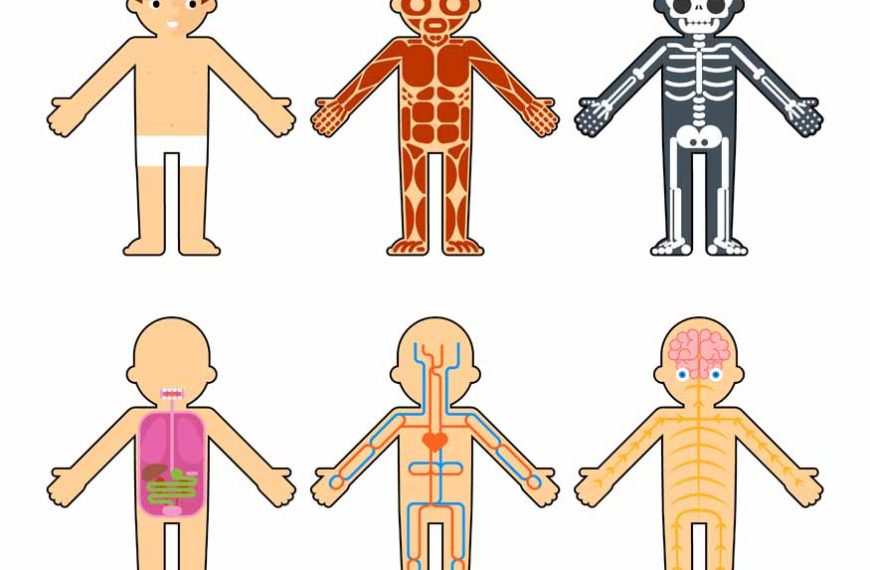Babies are born with around 300 bones, but some of these will fuse as they grow older. They will have around 206 bones by the time they reach adulthood.
It may be difficult to imagine when looking at a newborn baby, but that child has roughly 300 bones – and those bones are growing and changing shape every day.
In contrast, the 206 bones in an adult account for around 15% of their total body weight.Is it true that babies have nearly 100 more bones than adults? How could that be possible?
Well, even though bones appear to be tough and rigid, they are made up of living tissue and calcium which is continually made up and discarded throughout your life.Let’s examine this more closely.
What are Bones Made of?
The majority of bones consist of many tissue layers:
- Periosteum:
- Compact bone:
- Cancellous:
- Bone Marrow:
The thick membrane that covers the outside of the bone.
The seamless hard layer that is seen in the bones of a skeleton.
It is a sponge-like tissue within the compact bone.
This is the jelly-like core of the bones that makes blood cells.
Why do Babies Have More Bones Initially?
- Fontanelles and Soft Spots:
- Cartilage to Bone Transformation:
- Adaptation to Growth:
One of the primary reasons for the increased number of bones in infants is the presence of fontanelles, commonly known as soft spots. These are gaps in the baby’s skull where bones have not yet fused. Fontanelles allow for the flexibility required during childbirth, easing the passage through the birth canal. As the baby grows, these soft spots gradually close, and the skull bones fuse together, resulting in a reduced number of bones.
At birth, a significant portion of a baby’s skeletal structure is composed of cartilage, a flexible and softer tissue than bone. Over time, this cartilage undergoes a process called ossification, transforming into hard bone. As bones ossify and fuse, the overall bone count decreases, contributing to the characteristic difference between a baby’s and an adult’s skeletal system.
The additional bones in a baby’s body serve a practical purpose during the early stages of development. These extra bones provide greater flexibility and accommodate the rapid growth that occurs during infancy and childhood. As the baby progresses through various stages of growth, the body adapts, and bones fuse to provide strength and stability.
What is the Role of Calcium in the Development of Bones?
Calcium is a mineral that is necessary for the development of new bone tissue. It is present in both formula and breast milk. You must get all the calcium you require from diet or supplements because the body is unable to produce it.
Additionally, if your child subsequently becomes reluctant to eat the leafy greens, remind them that these vegetables—provide calcium, which aids in their growth.
So, make sure to get enough calcium in your child’s diet (and yours, too). Low-fat dairy products (milk, cheese, yoghurt), seeds, almonds, white beans, and leafy greens like spinach and collard greens are among the nutritious foods high in calcium.
The Key Takeaways
The reason behind babies having more bones than adults lies in the intricate process of development and adaptation. Fontanelles, cartilage transformation, and the need for flexibility during rapid growth all contribute to the initially higher bone count in infants. As babies progress through the stages of childhood, their bodies undergo unique transformations, leading to the fusion of bones and the establishment of a solid, adult skeletal structure.
Understanding the nuances of babies’ bone development not only adds to the awe-inspiring nature of human growth but also highlights the complexities of the human body’s structure. As parents and caregivers witness the remarkable journey from infancy to adulthood, they can appreciate the complexity and beauty inherent in the bone structure that supports the growth and development of these incredible little beings.
As we are concerned about our kids, it is essential to provide an environment that nurtures holistic development. This is where institutions like EuroKids play a crucial role. EuroKids understands the unique needs of growing minds and bodies, offering a blend of education, care, and a stimulating environment. With a commitment to fostering all aspects of a child’s development, EuroKids stands as a beacon for quality early childhood education.
Frequently Asked Questions
Q1. Do babies actually have more bones than adults? Answer: Yes, babies are born with around 300 bones, which gradually fuse to reach the adult count of 206.
Q2. How does nutrition impact a baby’s bone development? Answer: Adequate nutrition is crucial for optimal bone formation in infants. A well-balanced diet that is rich in essential nutrients supports healthy skeletal growth.
Q3. Are baby bones as fragile as they appear? Answer: Contrary to popular belief, baby bones are not excessively fragile. They are designed to resist the demands of infancy and gradually strengthen over time.
Q4. What role does genetics play in baby bone development? Answer: Genetics influence the number and structure of bones in babies. Individual variations in genetic factors contribute to differences in skeletal development.
Q5. How can parents promote healthy bone development in their infants? Answer: Parents can support healthy bone development through a balanced diet and age-appropriate physical activities, fostering overall well-being in their infants.
Q6. Can the number of bones in a baby vary? Answer: Yes, slight variations in the number of bones can occur due to genetic factors. However, the average count is around 270-300 at birth.
Q7. How does the birthing process impact a baby’s skull? Answer: The birthing process involves the compression of a baby’s skull, contributing to the soft spots known as fontanelles. These fontanelles allow flexibility during passage through the birth canal.
Q8. Are there any specific signs of healthy bone development in infants? Answer: Signs of healthy bone development include the progressive closure of fontanelles, proper alignment of limbs, and reaching developmental milestones related to motor skills.
Q9. What are the potential consequences of insufficient nutrition on baby bone health? Answer: Inadequate nutrition during infancy can lead to delayed bone development, increased susceptibility to fractures, and long-term skeletal issues. Proper nutrition is vital for ensuring optimal bone health.
Q10. How does EuroKids focus on holistic development in early childhood education?Answer: EuroKids is committed to providing a comprehensive and holistic approach to early childhood education. The programs incorporate age-appropriate activities, fostering creativity, critical thinking, and social interaction. With a focus on creating a safe and inclusive environment, EuroKids aims to lay a strong foundation for lifelong learning and overall well-being.















